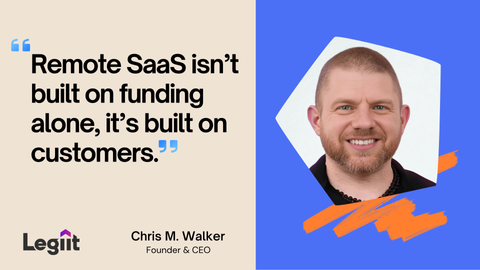Building a SaaS for remote teams without venture capital? Good. You're already thinking smarter than most founders who burn through millions before finding product-market fit.
I've built and scaled multiple businesses to 7 and 8 figures. Most of them started with zero outside funding. The ones that succeeded all had one thing in common: they solved real problems for real people willing to pay real money.
Remote teams are different. They don't buy tools the same way office teams do. They need solutions that work immediately, integrate smoothly, and don't require three IT consultants to set up. If you're bootstrapping a SaaS for this market, you'd better understand what actually matters.
Start with one feature that crushes one problem.
Most SaaS founders try to build Swiss Army knives. They want their tool to do everything. Project management, time tracking, communication, file sharing, invoicing, and probably make coffee too.
Stop.
Remote teams already use 15 different tools. They don't want another "all-in-one solution." They want one thing that works perfectly.
Loom started as just an async video recording tool. Nothing else. Figma focused solely on collaborative design. Notion began as a better wiki. These companies are worth billions now, but they started by solving one specific problem better than anyone else.
Pick your one thing. Make it 10x better than the current solution. Then ship it.
Your early users will tell you what to build next. But only if your first feature actually works.
Bootstrap with services first, product second
Here's what nobody tells you about bootstrapping SaaS: you need revenue from day one. Not in six months. Not after you build the perfect product. Day one.
The fastest path? Sell the service before you build the software.
When we started Legiit, we were manually connecting businesses with freelancers. No fancy platform. Just a simple website and a lot of hustle. We validated demand, understood the workflow, and made money while building the actual marketplace.
You can do the same. Want to build project management software for remote agencies? Start by manually managing projects for a few clients. Building an async communication tool? Run a Done-For-You async workflow service first.
This approach gives you three things:
● Immediate cash flow to fund development
● Deep understanding of your customers' actual problems
● Early customers who become your product's biggest advocates
Price for profit from the start
Too many bootstrappers price like venture-backed companies. They think they need to be cheap to compete.
Wrong.
Remote teams pay for value, not features. If your tool saves them 5 hours a week, price it accordingly. If it prevents one miscommunication that could cost them a client, it's worth hundreds or thousands per month.
Start with higher prices than you think you deserve. You can always lower them. But raising prices on existing customers? That's a nightmare.
We've always priced Legiit based on value delivered, not what competitors charge. That's why we're profitable while similar platforms burn through investor cash.
Price high. Deliver higher value. Let the venture-backed competition fight over the bottom of the market.
Scale through community, not advertising
Paid ads work when you have deep pockets. Bootstrappers need something better: community.
Remote teams trust recommendations from other remote teams. They hang out in specific Slack groups, Discord servers, and online communities. One authentic recommendation there beats a thousand Facebook ads.
Build in public. Share your journey. Document your mistakes. Remote workers respect transparency and authenticity more than polished marketing.
Create content that actually helps, not content that sells. Write about remote work challenges. Share templates. Build free tools that complement your paid product. Give first, sell second.
Your early adopters become your marketing team if you treat them right.
The compound effect of sustainable growth
Venture-backed SaaS companies need hockey stick growth. You don't.
Growing 10% month-over-month turns $10k MRR into $31k MRR in one year. In two years? $97k. In three? Over $300k. All without raising a dime.
Focus on retention over acquisition. A 5% monthly churn rate means half your customers leave within 14 months. Drop that to 2%, and your average customer stays for 50 months.
The math is simple. Keep customers longer, grow revenue faster, and build a real business instead of a growth story for investors.
Build for the future of work, not today's trends.
Remote work isn't going anywhere. But how do teams work remotely? That's changing fast.
AI is transforming every workflow. Async collaboration is replacing endless Zoom calls. Global talent is becoming the norm, not the exception.
Build your SaaS with these shifts in mind. Make it API-first so it integrates with whatever comes next, design for async collaboration from the start. Consider global teams with different languages, time zones, and work styles.
The tools that win won't be the ones solving today's problems. They'll be the ones ready for tomorrow's opportunities.
That's how you bootstrap and scale. One customer at a time. One problem at a time. Profitably.



